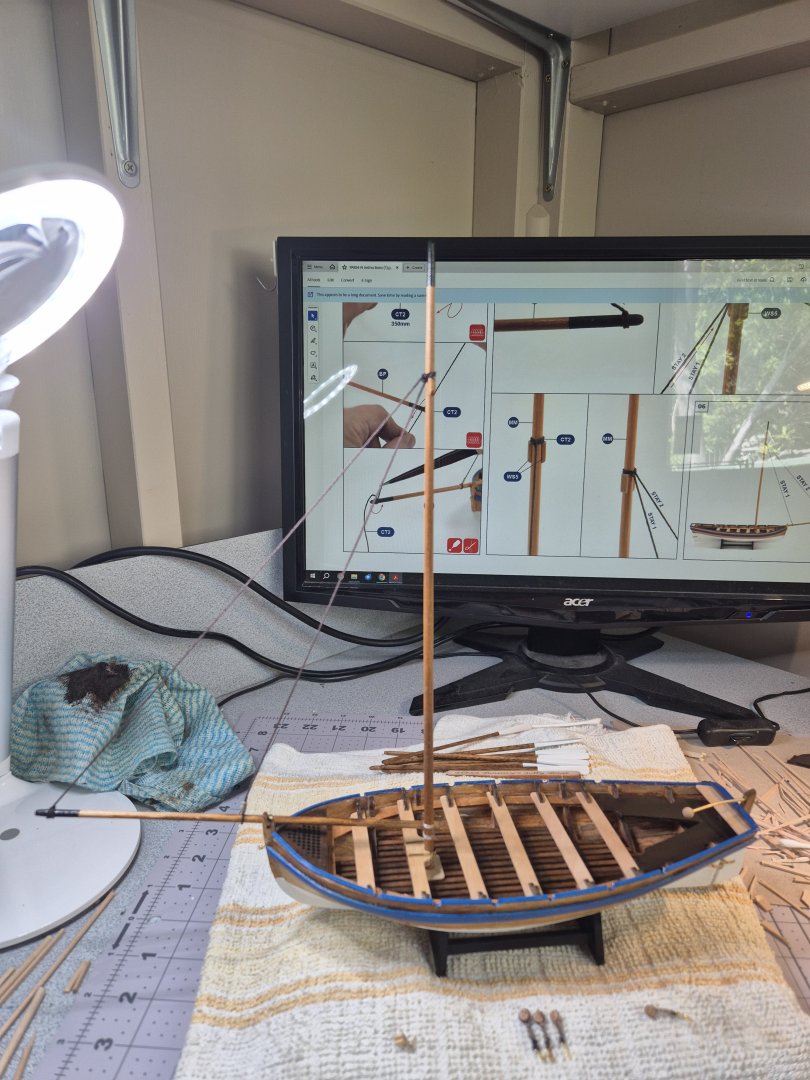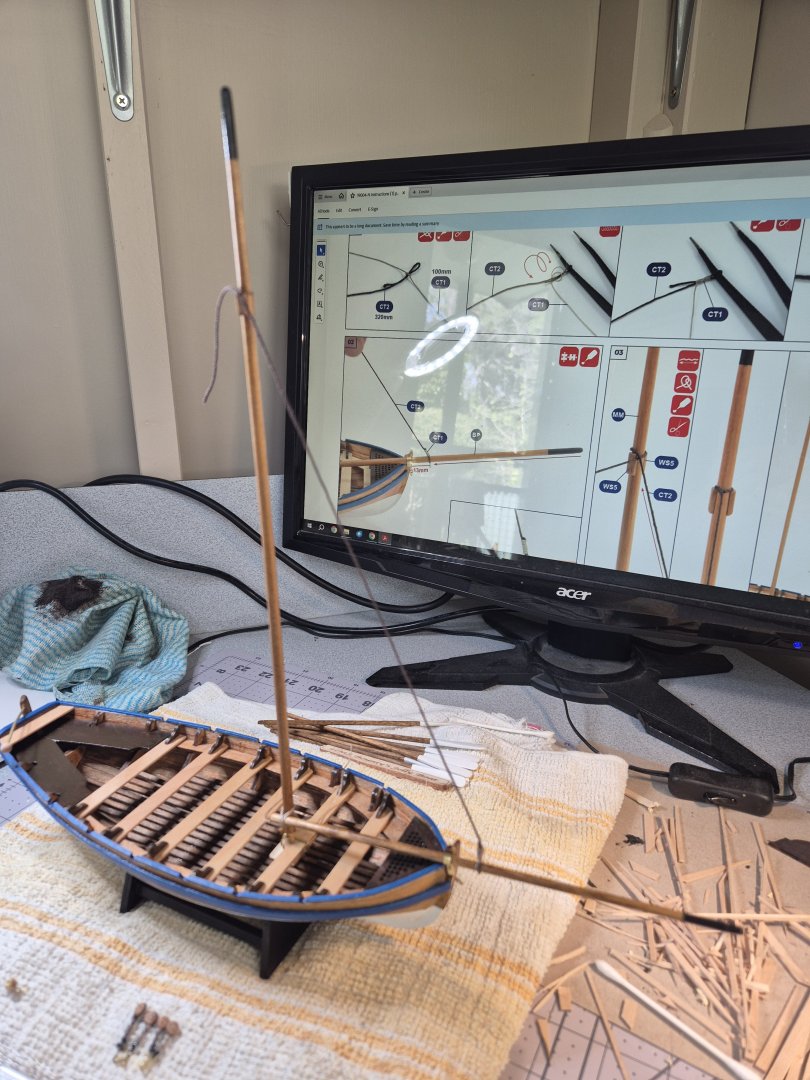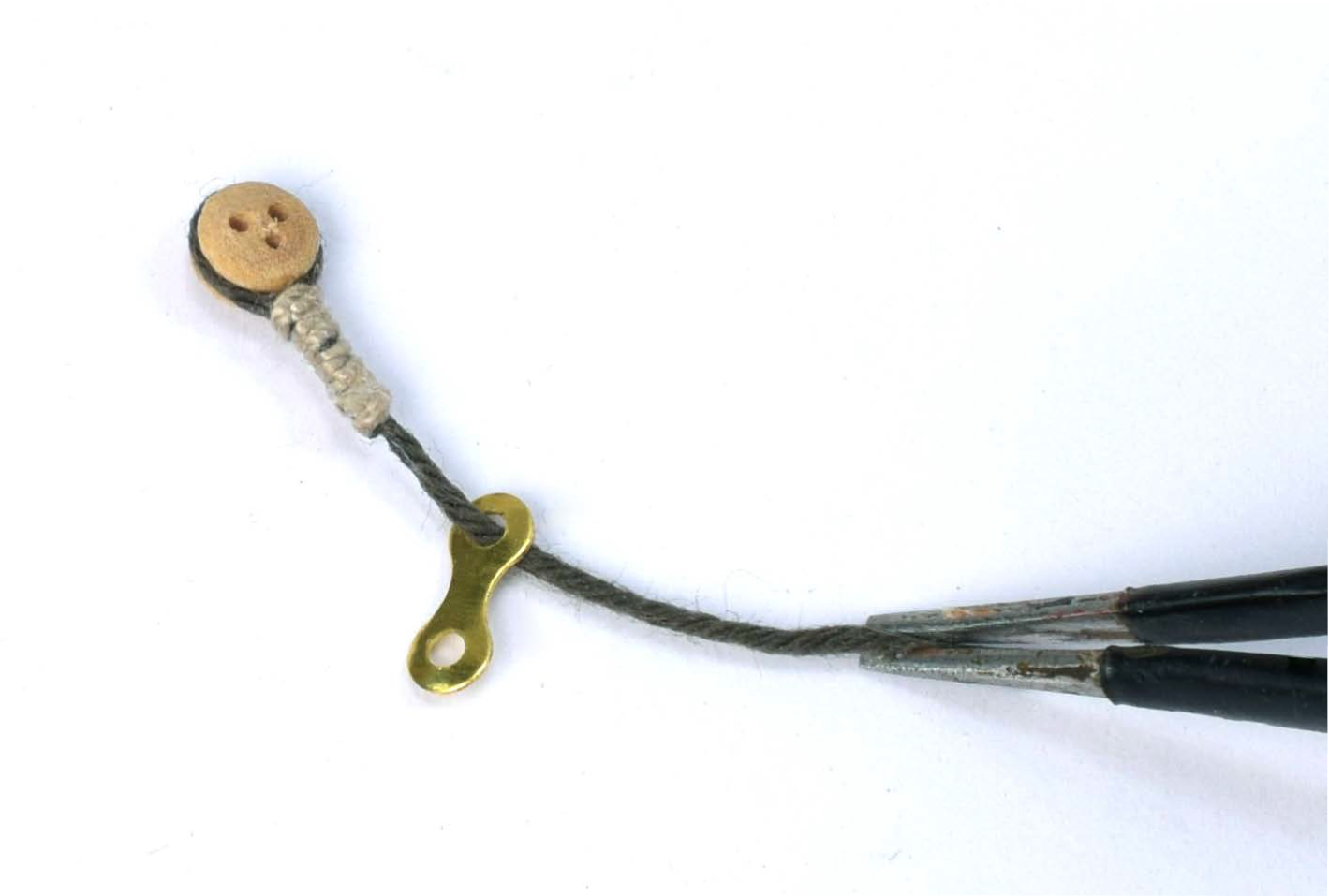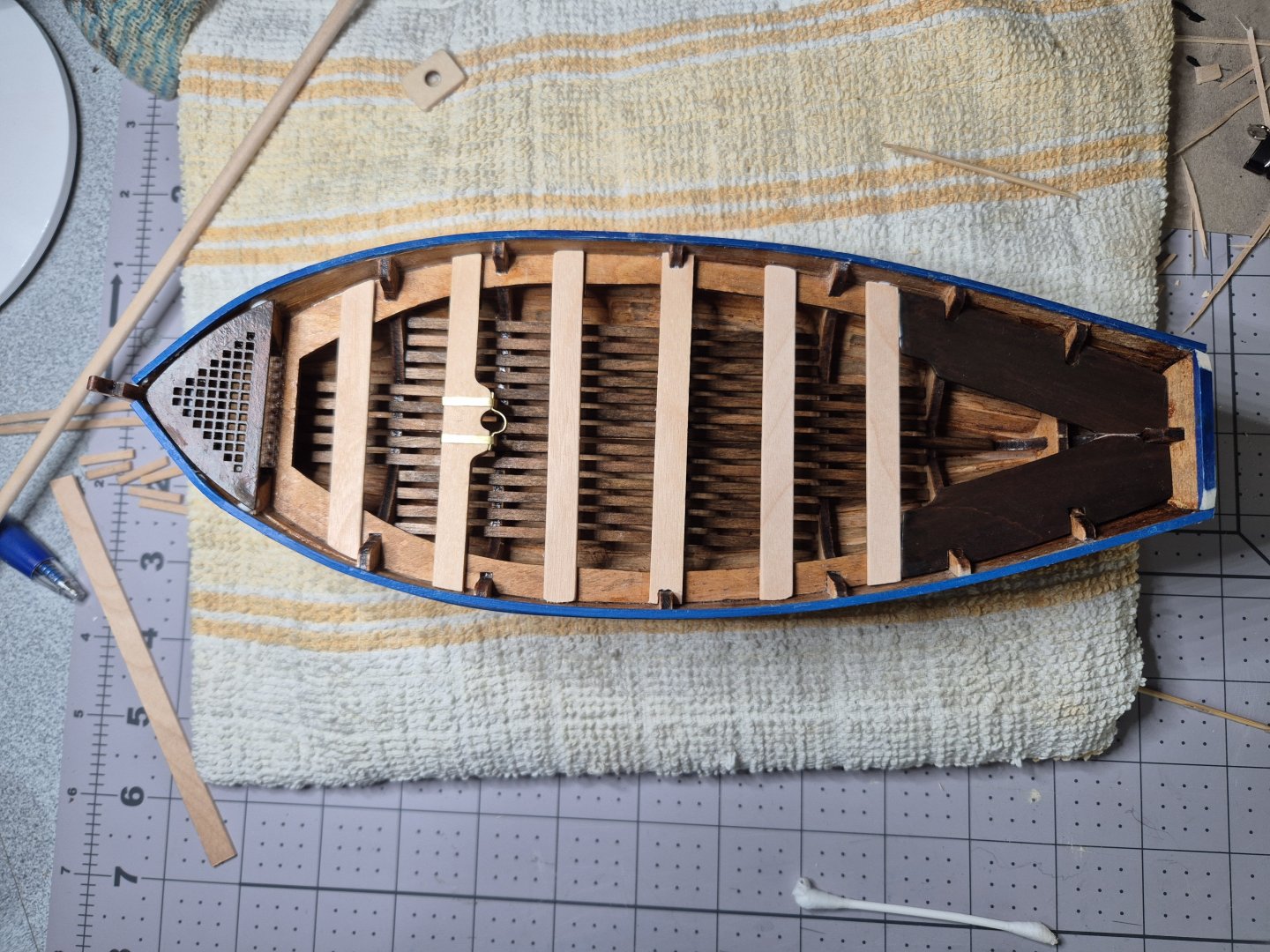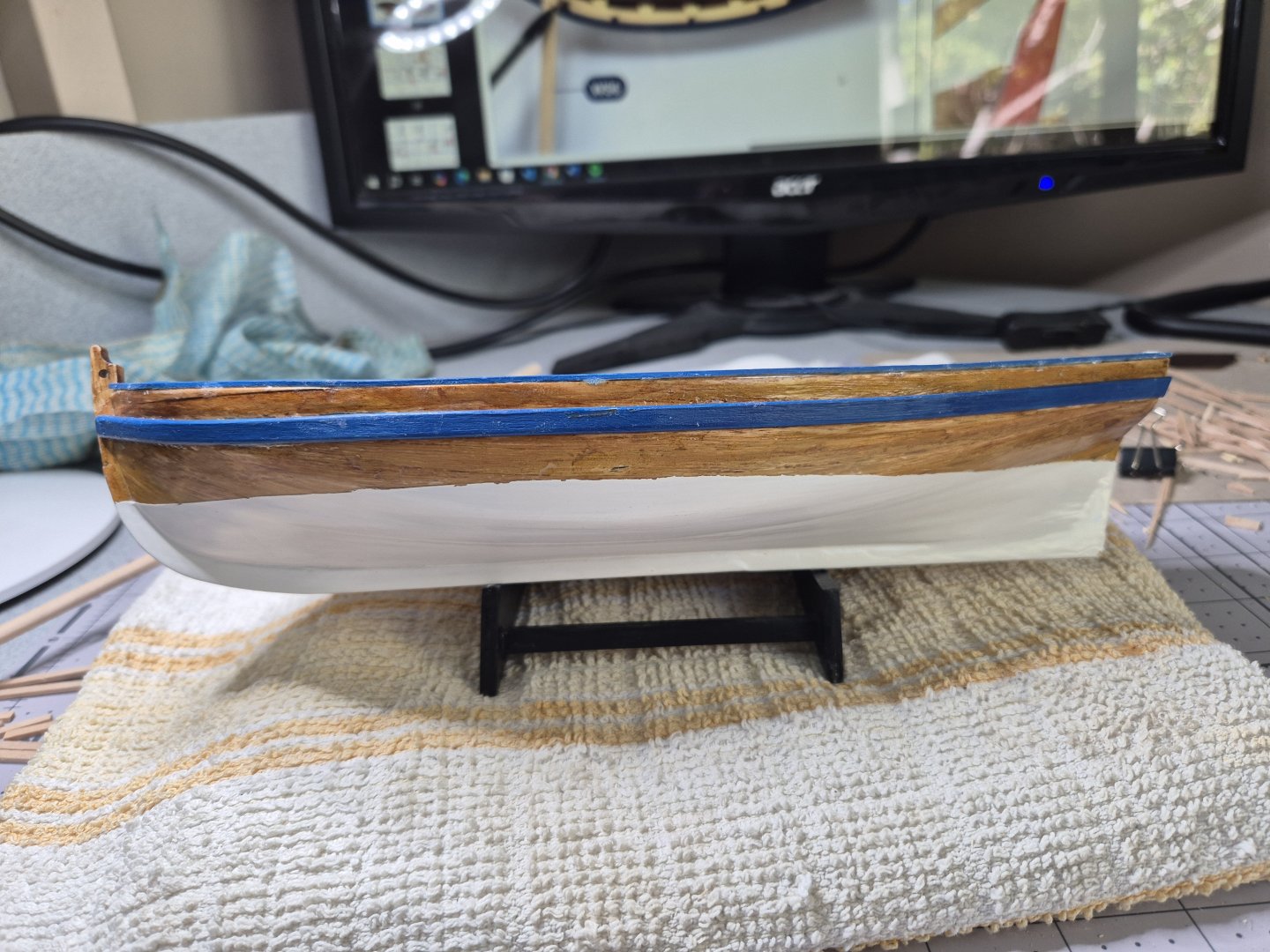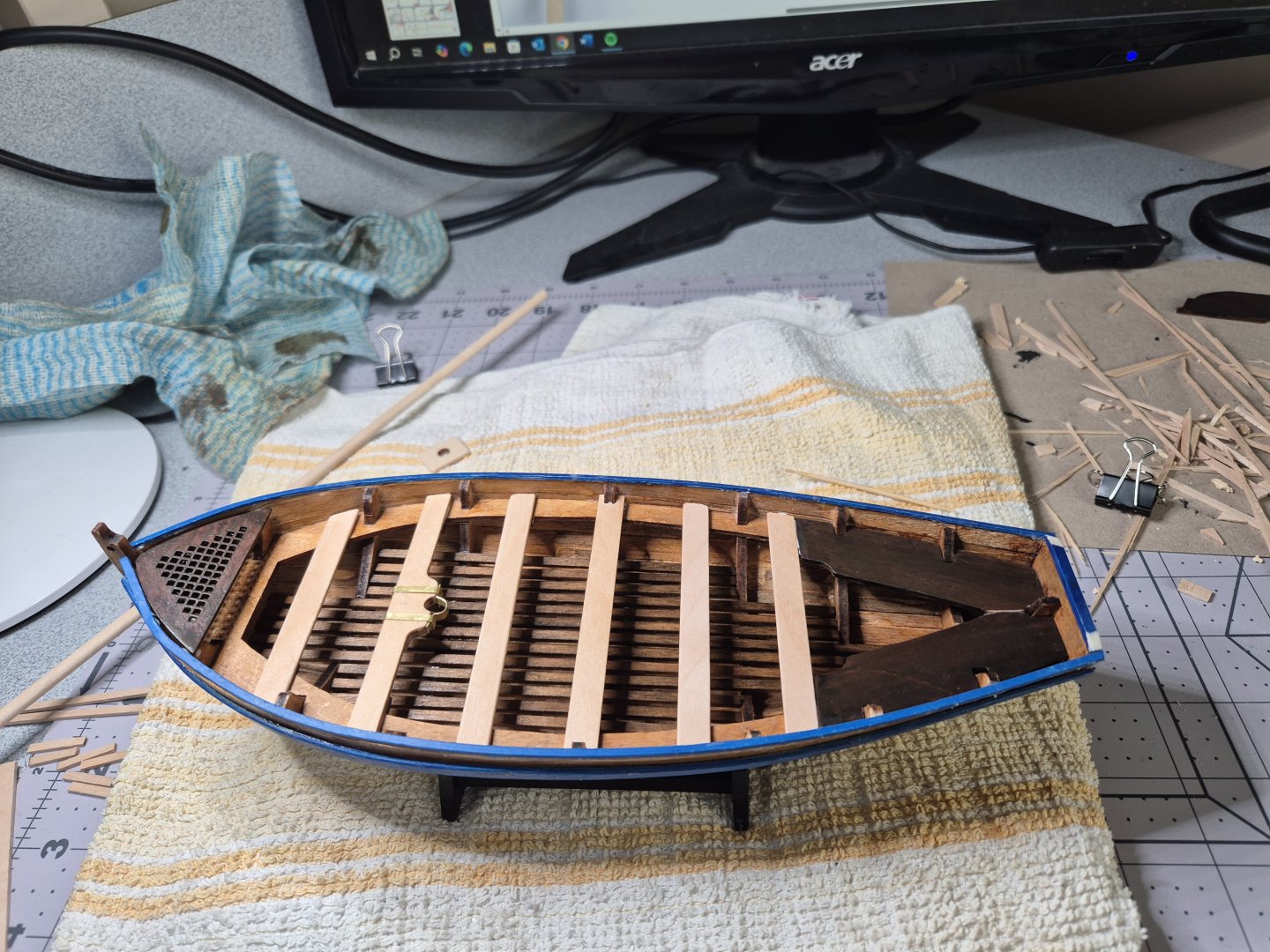
Peter S
Members-
Posts
37 -
Joined
-
Last visited
Profile Information
-
Gender
Male
-
Location
Sydney, Australia
Recent Profile Visitors
The recent visitors block is disabled and is not being shown to other users.
-
 Peter S reacted to a post in a topic:
Please Double-Check Your Log Titles Before Posting!
Peter S reacted to a post in a topic:
Please Double-Check Your Log Titles Before Posting!
-
 Jonny 007 reacted to a post in a topic:
HMS Bounty Jolly Boat by Peter S - FINISHED - Artesania Latina - 1:25 - First Build
Jonny 007 reacted to a post in a topic:
HMS Bounty Jolly Boat by Peter S - FINISHED - Artesania Latina - 1:25 - First Build
-
 Peter S reacted to a post in a topic:
HMS Bounty Jolly Boat by Peter S - FINISHED - Artesania Latina - 1:25 - First Build
Peter S reacted to a post in a topic:
HMS Bounty Jolly Boat by Peter S - FINISHED - Artesania Latina - 1:25 - First Build
-
 Peter S reacted to a post in a topic:
HMS Bounty Jolly Boat by Peter S - FINISHED - Artesania Latina - 1:25 - First Build
Peter S reacted to a post in a topic:
HMS Bounty Jolly Boat by Peter S - FINISHED - Artesania Latina - 1:25 - First Build
-
 DCooper reacted to a post in a topic:
HMS Bounty Jolly Boat by Peter S - FINISHED - Artesania Latina - 1:25 - First Build
DCooper reacted to a post in a topic:
HMS Bounty Jolly Boat by Peter S - FINISHED - Artesania Latina - 1:25 - First Build
-
 Cabbie reacted to a post in a topic:
HMS Bounty Jolly Boat by Peter S - FINISHED - Artesania Latina - 1:25 - First Build
Cabbie reacted to a post in a topic:
HMS Bounty Jolly Boat by Peter S - FINISHED - Artesania Latina - 1:25 - First Build
-
 ccoyle reacted to a post in a topic:
HMS Bounty Jolly Boat by Peter S - FINISHED - Artesania Latina - 1:25 - First Build
ccoyle reacted to a post in a topic:
HMS Bounty Jolly Boat by Peter S - FINISHED - Artesania Latina - 1:25 - First Build
-
 Zvr reacted to a post in a topic:
HMS Bounty Jolly Boat by Peter S - FINISHED - Artesania Latina - 1:25 - First Build
Zvr reacted to a post in a topic:
HMS Bounty Jolly Boat by Peter S - FINISHED - Artesania Latina - 1:25 - First Build
-
 Zvr reacted to a post in a topic:
HMS Bounty Jolly Boat by Peter S - FINISHED - Artesania Latina - 1:25 - First Build
Zvr reacted to a post in a topic:
HMS Bounty Jolly Boat by Peter S - FINISHED - Artesania Latina - 1:25 - First Build
-
 Peter S reacted to a post in a topic:
HMS Bounty Jolly Boat by Peter S - FINISHED - Artesania Latina - 1:25 - First Build
Peter S reacted to a post in a topic:
HMS Bounty Jolly Boat by Peter S - FINISHED - Artesania Latina - 1:25 - First Build
-
 Knocklouder reacted to a post in a topic:
HMS Bounty Jolly Boat by Peter S - FINISHED - Artesania Latina - 1:25 - First Build
Knocklouder reacted to a post in a topic:
HMS Bounty Jolly Boat by Peter S - FINISHED - Artesania Latina - 1:25 - First Build
-
 Knocklouder reacted to a post in a topic:
HMS Bounty Jolly Boat by Peter S - FINISHED - Artesania Latina - 1:25 - First Build
Knocklouder reacted to a post in a topic:
HMS Bounty Jolly Boat by Peter S - FINISHED - Artesania Latina - 1:25 - First Build
-
 GrandpaPhil reacted to a post in a topic:
HMS Bounty Jolly Boat by Peter S - FINISHED - Artesania Latina - 1:25 - First Build
GrandpaPhil reacted to a post in a topic:
HMS Bounty Jolly Boat by Peter S - FINISHED - Artesania Latina - 1:25 - First Build
-
 GrandpaPhil reacted to a post in a topic:
HMS Bounty Jolly Boat by Peter S - FINISHED - Artesania Latina - 1:25 - First Build
GrandpaPhil reacted to a post in a topic:
HMS Bounty Jolly Boat by Peter S - FINISHED - Artesania Latina - 1:25 - First Build
-
Thanks 🙂 It was a great kit to have as my first model. Learnt heaps but know that there is so much more to learn. There are some fantastic modelers out there with extraordinary talents. I am happy with my results. Even though there are lots of things that could have been done better the outcome was better than I could have hoped. Obviously we are on the same wavelength! I have already purchased the next project which is Vanguard's HM Cutter Sherbourne. Will be starting that in the New Year after the festive season has settled down. Doing lots of reading and planning, etc. The good news is there are lots of videos and logs to look at and help guide through the construction. Will start a build long for this project as well. Appreciate your help and comments throughout the build.
- 51 replies
-
- bounty jolly boat
- Artesania Latina
-
(and 2 more)
Tagged with:
-
 Peter S reacted to a post in a topic:
HMS Bounty Jolly Boat by Peter S - FINISHED - Artesania Latina - 1:25 - First Build
Peter S reacted to a post in a topic:
HMS Bounty Jolly Boat by Peter S - FINISHED - Artesania Latina - 1:25 - First Build
-
 Peter S reacted to a post in a topic:
Chris Watton and Vanguard Models news and updates Volume 2
Peter S reacted to a post in a topic:
Chris Watton and Vanguard Models news and updates Volume 2
-
 Peter S reacted to a post in a topic:
HMS Bounty Jolly Boat by Peter S - FINISHED - Artesania Latina - 1:25 - First Build
Peter S reacted to a post in a topic:
HMS Bounty Jolly Boat by Peter S - FINISHED - Artesania Latina - 1:25 - First Build
-
Finally finished or as far as I intend to go with this model. Really enjoyed building this model. It was very challenging and not everything worked out exactly as it should but am still pretty happy with the results. Surprisingly (at least to me) I found the sails the hardest part especially with the rings attached to the foresails. I really never got them right. Even though I ironed the sails they still show the original creases from when they were packaged. Might have to look at that if I ever build a kit with sails again. I decided not to use the flag provided, as I think that it detracts from the model. The other change I made was where the main sheet was attached. I noticed that a number of the logs added a wire horse to attach the main block but I decided just to attach the main block to the deck floor so that it was out of the way of the tiller. Learnt so much but know that there it will always be a learning process.
- 51 replies
-
- bounty jolly boat
- Artesania Latina
-
(and 2 more)
Tagged with:
-
- 51 replies
-
- bounty jolly boat
- Artesania Latina
-
(and 2 more)
Tagged with:
-
 Peter S reacted to a post in a topic:
HMS Bounty Jolly Boat by Peter S - FINISHED - Artesania Latina - 1:25 - First Build
Peter S reacted to a post in a topic:
HMS Bounty Jolly Boat by Peter S - FINISHED - Artesania Latina - 1:25 - First Build
-
Have been travelling overseas but have made some inroads since we got back. Making good progress, indeed, am almost finished hopefully will be able to show the completed job by the end of next week. Going away for a few days so have to wait until I get back. Got the two foresails installed. Had a lot of trouble with the tiny rings that attach to the sail and then to the forestays. Just couldn't get the rings to close around the forestay. Ended up leaving the top and bottom off! A few pics of what has been done to date. Next step is rigging the mainsail. Having issues loading the pics. They just get an error 200 from the server. Will need to try again later.
- 51 replies
-
- bounty jolly boat
- Artesania Latina
-
(and 2 more)
Tagged with:
-
 Peter S reacted to a post in a topic:
Chris Watton and Vanguard Models news and updates Volume 2
Peter S reacted to a post in a topic:
Chris Watton and Vanguard Models news and updates Volume 2
-
 Peter S reacted to a post in a topic:
Sherbourne by DB789 - Vanguard Models - 1:64
Peter S reacted to a post in a topic:
Sherbourne by DB789 - Vanguard Models - 1:64
-
Looking really good. I hope to be starting my build of Sherbourne in the new year after I finish my Bounty Jolly Boat build (getting very close). Have been following your progress and like what you have done so far and am always interested in the experiences that you encounter along the way. Your paint job is awesome. Did you use a brush or spray? I have also found it difficult to get wipe on poly here in Australia. (I might not be looking in the right places!)
- 21 replies
-
- Vanguard
- Sherbourne;
-
(and 1 more)
Tagged with:
-
Have been making a little progress. Lots of outdoor projects with the admiral are taking most of the time at the moment. Also about to head overseas for a few weeks so no further progress until I get back. However, the good news is that all the stays and deadeyes are now installed. Found that adding some CA to the end of the thread and then running my fingers along it makes it nice and stiff and much easier to push through the deadeye holes. Finally seeing the light at the end of the tunnel. Next step is installing the sails.
- 51 replies
-
- bounty jolly boat
- Artesania Latina
-
(and 2 more)
Tagged with:
-
I did manage to get one of chainplates threaded more by luck than anything else. Put a tiny bit of CA onto the end of the thread and then was able to pass it through the eye of the chain plate. Then remembered I had a the HM Sherbourne kit and the thread there is a much better quality so used that thread instead. Big difference! Big learning curve doing the seizing. Not as easy as I thought. Really only one out of the four was reasonable. But learnt a lot which was what this model is all about! Have not the mast and bowsprit installed and put the two forestays in place.
- 51 replies
-
- bounty jolly boat
- Artesania Latina
-
(and 2 more)
Tagged with:
-
Thanks for your suggestion Chris. In the end I used the broken bit and pushed the piece that was broken further in which left just enough room to fix the tiller. Reasonably happy with the outcome. Rudder is now installed. One question I have is do you let the rudder swing freely or do you lock it amidships with some glue? Started building the deadeye assemblies while waiting for some pain to dry. The kit calls for the chain plate to be seized to the deadeye. However trying to pass the thread through the chain plate is near impossible. Or at least I have not yet been able to manage it. The thread just starts to fray. The hole in the chain plate is 1mm and the thread is 0.5mm. Has anyone got any ideas on how to achieve threading the chain plate. The pic above is from the instructions. Hoping there might be a few tricks to try that I am not aware about. I suspect that a big part of the problem is that quality of the thread is not very good. Cheers Peter
- 51 replies
-
- bounty jolly boat
- Artesania Latina
-
(and 2 more)
Tagged with:
-
Finished rudder assembly though not without some drama. Managed to break a drill bit in the rudder (where the tiller is attached). Was unable to get it out as it broke without leaving anything protruding. Anyone have any ideas on how to remove the broken piece? With the bit broken it impedes inserting the tiller. Only solution I can think of is to remake the rudder.
- 51 replies
-
- bounty jolly boat
- Artesania Latina
-
(and 2 more)
Tagged with:
-
Thanks for this. Where did you get that information/diagram from? Is there a bigger document with more information. Always looking for documents/books with useful information. Really appreciate the feedback. I did try the drill method with spectacular failure. The drill was way too fast and the spar got the wobbles and snapped at the chuck. Oh well it was a learning exercise and fortunately I had decided to do this test knowing that I had enough for a spare. Phew! Might have to invest in a miniature plane at some point. I did these by hand, continually turning while moving the sandpaper up and down. Seemed to work out pretty well. Managed to to do the 4 spars this afternoon! Working on the rudder assembly now. And then it will be onto the rigging.
- 51 replies
-
- bounty jolly boat
- Artesania Latina
-
(and 2 more)
Tagged with:
-
I too have just purchased the Sherbourne, though I still need to finish HM Bounty Joly Boat before I can start. I will be following your log with a lot of interest 🙂 Cheer Peter
- 20 replies
-
- Sherbourne
- Vanguard Models
-
(and 1 more)
Tagged with:
-
Has anyone got any pointers and/or videos on how best to taper the spars to ensure that the tape is even and centred? Remember reading somewhere about using a drill but can't find where I read that or if there was any pointers on how it was used. Tks
- 51 replies
-
- bounty jolly boat
- Artesania Latina
-
(and 2 more)
Tagged with:
-
Finally managed to attach the wales, although need to work out how to bend the last few mm's at the bow to attach to the hull. Had a few dramas getting the cap rails attached as well. Took a number of attempts to get the rail bent into the correct shape. Unfortunately I did manage to break one but luckily there was spare piece of timber so had to do it all over again. Have now positioned the thwarts and glued them in place. Next step is work on the rudder. This is currently undergoing painting in readiness. After that will start on the spars. Some pictures below - still a bit rough in parts and needs some touch-up on some of the paint work but starting to look like a Jolly Boat!
- 51 replies
-
- bounty jolly boat
- Artesania Latina
-
(and 2 more)
Tagged with:
-
Great job. I have just ordered this kit from Vanguard and it is scheduled to arrive next week. I am still building the HMS Bounty Jolly Boat from AL but wanted to get the kit now in readiness to start. Have really enjoyed reading your log and will be using it a lot when I commence work. Just hope I can get the same fantastic outcome as you have achieved. You have definitely set the bar high!
- 177 replies
-
- Sherbourne
- vanguard models
-
(and 3 more)
Tagged with:
-
Thanks Jeff. Was thinking I might have to go this route though was hoping that there was some magic solution that I hadn't yet found 🙃. Appreciate the feedback!
- 51 replies
-
- bounty jolly boat
- Artesania Latina
-
(and 2 more)
Tagged with:
About us
Modelshipworld - Advancing Ship Modeling through Research
SSL Secured
Your security is important for us so this Website is SSL-Secured
NRG Mailing Address
Nautical Research Guild
237 South Lincoln Street
Westmont IL, 60559-1917
Model Ship World ® and the MSW logo are Registered Trademarks, and belong to the Nautical Research Guild (United States Patent and Trademark Office: No. 6,929,264 & No. 6,929,274, registered Dec. 20, 2022)
Helpful Links
About the NRG
If you enjoy building ship models that are historically accurate as well as beautiful, then The Nautical Research Guild (NRG) is just right for you.
The Guild is a non-profit educational organization whose mission is to “Advance Ship Modeling Through Research”. We provide support to our members in their efforts to raise the quality of their model ships.
The Nautical Research Guild has published our world-renowned quarterly magazine, The Nautical Research Journal, since 1955. The pages of the Journal are full of articles by accomplished ship modelers who show you how they create those exquisite details on their models, and by maritime historians who show you the correct details to build. The Journal is available in both print and digital editions. Go to the NRG web site (www.thenrg.org) to download a complimentary digital copy of the Journal. The NRG also publishes plan sets, books and compilations of back issues of the Journal and the former Ships in Scale and Model Ship Builder magazines.






